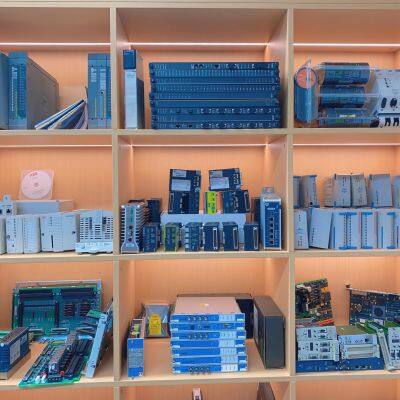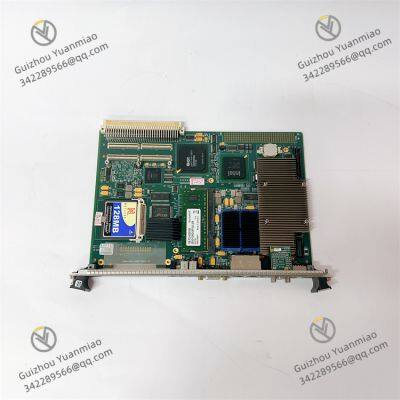Product Description
I. Overview
GE IS415UCVHH1A B is a VME controller board that plays a key role in the field of industrial automation. It is meticulously crafted by General Electric, incorporating advanced industrial control technology concepts, aiming to provide stable and efficient control solutions for various complex industrial environments. With its excellent performance and reliable quality, this product has been widely applied in numerous industrial scenarios and has become an indispensable part of the industrial automation process.

II. Technical Parameters
Physical Specifications: The controller board has dimensions of 263×58×28mm. This specification design fully considers the limitations of installation space such as industrial control cabinets, enabling it to be relatively easily integrated into various industrial equipment. It weighs approximately 4.3kg. The reasonable weight ensures the stable installation of internal components while not imposing excessive burden on the overall structure of the equipment, facilitating operations for installation and maintenance personnel.
Interface Configuration: In terms of interfaces, it is equipped with a variety of practical interface types. There are 2 USB ports on the board, which facilitate the connection of external storage devices, debugging tools, etc., providing convenience for data transmission and equipment debugging. 2 Ethernet ports support high - speed network communication, allowing easy access to industrial Ethernet to achieve data interaction with other devices or systems, meeting the requirements for real - time and large - volume data transmission in industrial automation. In addition, there are 2 COM ports (equipped with corresponding LED indicators), which are often used to connect serial devices such as sensors and intelligent instruments, realizing the collection of various on - site data and the issuance of control commands. Meanwhile, it also has a mouse/keyboard connector and a VGA display port, making it easy to connect human - computer interaction devices. Operators can connect external monitors, mice, and keyboards through these interfaces to perform intuitive operations and monitoring of the equipment.
Storage and Operation: It supports a variety of storage and operation components. It is equipped with RAM slots, and the memory capacity can be flexibly configured according to actual application needs to meet the requirements of data processing and storage for control tasks of different complexity levels. At the same time, it is equipped with a 128MB compact flash drive, which is used to store key system programs, configuration files, and part of the operating data, ensuring the security and integrity of data in abnormal situations such as power outages. In addition, a heat sink is installed on the board to dissipate the heat generated during the operation of the equipment, ensuring that all components work stably in a suitable temperature environment and extending the service life of the equipment. Moreover, it is equipped with a CMOS battery to provide power support for components that require continuous power supply such as the real - time clock, ensuring the accuracy of the equipment time, which is particularly important for some industrial control scenarios with high requirements for time synchronization.

III. Functional Features
Powerful Control Capability: As a VME controller board, it can efficiently coordinate and manage various devices and tasks in the VME system. In industrial automated production lines, it can accurately control the operation of equipment in each link of the production line, such as controlling the start, stop, and speed regulation of motors, ensuring the stable operation of the material conveying system, and accurately controlling the action sequence and time nodes of various actuators according to production process requirements. Through the precise control of these devices, the automation and high efficiency of the production process are realized, the production efficiency is effectively improved, the labor cost is reduced, and the stability of product quality is ensured.
Flexible Redundancy Configuration: It supports multiple redundancy configuration modes, including simplex, duplex, and triple redundancy systems. Users can flexibly choose the appropriate redundancy configuration mode according to the different requirements for system reliability in actual industrial application scenarios. For example, in industrial production processes with extremely high requirements for production continuity, such as the chemical and power industries, the adoption of a triple redundancy system can greatly improve the fault tolerance of the system. Even if one controller fails, the redundant controller can quickly take over the work, ensuring that the production process is not affected, avoiding production interruptions caused by equipment failures, and bringing huge economic losses to enterprises. This flexible redundancy configuration not only improves the reliability of the system but also provides enterprises with the option to balance cost and efficiency according to their own needs.
Advanced Software Support: It adopts Control ST software, which can provide high - quality, time - related data from a single source. This means that in the entire industrial control system, data generated by different devices and links can be integrated and analyzed under a unified time benchmark. Operators can comprehensively and in - depth understand and monitor the production process based on these accurate, real - time, and time - consistent data. Through data analysis, problems or potential risks in the production process can be found in a timely manner, and corresponding adjustments and decisions can be made quickly. For example, in the production process, through real - time analysis of equipment operation data, potential faults of equipment can be predicted in advance, so that preventive maintenance can be arranged, the probability of sudden equipment failures is reduced, and the overall stability and reliability of the production system are improved.

IV. Common Faults and Solutions
Network Communication Faults
Fault Phenomenon: The network connection between the controller board and other devices is unstable, with problems such as data transmission interruptions, packet loss, or slow transmission speed.
Possible Causes: Damaged network cables, such as broken outer skin or internal wires of network cables, resulting in blocked signal transmission; loose Ethernet ports with poor contact, affecting the normal transmission of network signals; incorrect network parameter settings, such as IP address conflicts, improper subnet mask settings, wrong gateway configuration, etc., making the device unable to communicate correctly in the network; faults in network devices such as network switches, affecting the normal operation of the entire network.
Solutions: First, carefully check the network cable for obvious physical damage. If there is any damage or breakage, replace it with a new network cable in time. Then, check the connection of the Ethernet port, re - plug the network cable to ensure a firm connection of the port. Next, check the network parameter settings to ensure that parameters such as IP address, subnet mask, and gateway are consistent with the network environment and avoid conflicts with other devices. If the above checks do not find any problems, but the network communication fault still exists, it is necessary to check whether network devices such as network switches work normally. The replacement method can be used, and a known normal network device can be used for testing. If it is determined that the network device is faulty, repair or replace the faulty device in time.
Interface Connection Faults
Fault Phenomenon: USB devices, serial devices, or other external devices connected to the controller board cannot be recognized, or there are data errors, interruptions, etc. during data transmission.
Possible Causes: Loose interfaces, with the device connection wires not plugged in tightly, resulting in unstable signal transmission; damaged interface circuits, which may be caused by overvoltage, static electricity, etc., damaging the interface chips or lines; incorrectly installed or damaged drivers, making the operating system unable to correctly recognize and drive external devices.
Solutions: Check the connection of each interface, re - plug the device connection wires to ensure a tight interface connection. For USB devices, try connecting the device to other USB ports for testing to determine whether it is a problem with a single port. If it is suspected that the interface circuit is damaged, professional maintenance personnel need to use professional tools for testing and maintenance, and replace the damaged interface board if necessary. For serial devices, check whether the serial cable is normal, and at the same time confirm that the parameter settings such as baud rate, data bits, and parity bits of the device are consistent with those of the controller board. For driver problems, check the driver status of the corresponding device in the device manager. If it shows abnormalities, reinstall or update the driver, and the latest driver can be obtained from the official website of the device manufacturer for installation.
Storage Faults
Fault Phenomenon: The device prompts a memory error during operation, or cannot read or write data in the compact flash drive normally, and even the system fails to start.
Possible Causes: Loose RAM memory modules with poor contact, making the memory unable to work normally; damaged memory chips, which may be caused by long - term use, overheating, etc.; damaged compact flash drives, such as bad sectors, chip faults, etc.; damaged interfaces of storage devices, affecting data transmission.
Solutions: Open the device chassis, find the RAM memory module, re - plug the memory module to ensure it is installed firmly. If the fault still exists after solving the problem of loose memory modules, the memory chip may be damaged. It is necessary to use professional memory detection tools to detect the memory. After determining the damaged memory chip, replace the memory module of the same model and specification. For compact flash drive faults, try to connect the flash drive to other devices for read - write testing. If it is determined that the flash drive is damaged, try to use data recovery software to recover important data, and then replace it with a new compact flash drive. If it is suspected that the interface of the storage device is damaged, professional maintenance personnel shall check the interface circuit and repair or replace the interface components.
Equipment Abnormalities Caused by Heat Dissipation Problems
Fault Phenomenon: After the device runs for a period of time, phenomena such as slow system operation, crash, or automatic restart occur, and the device shell feels too hot when touched.
Possible Causes: Severe dust accumulation on the heat sink, blocking heat dissipation, resulting in excessive internal temperature of the device; faulty cooling fans, such as damaged fan blades, stopped motor, etc., unable to effectively dissipate heat for the device; too high ambient temperature of the device, exceeding the normal heat dissipation capacity of the device.
Solutions: Use a compressed air can or a brush to carefully clean the dust on the heat sink to restore its heat dissipation performance. Check the operation of the cooling fan. If the fan blades are damaged or the motor stops, replace the cooling fan with a new one in time. Improve the working environment of the device, strengthen ventilation and heat dissipation measures, such as installing air conditioners and adding ventilation equipment, to reduce the ambient temperature and ensure that the device operates within the normal temperature range. At the same time, regularly maintain and inspect the heat dissipation system of the device to prevent equipment faults caused by heat dissipation problems.
GE IS215UCVHM06A Functional safety controller
IS220PPDAH1A Feedback board for power distribution system
IS200TREGH2B Gas turbine emergency trip terminal board
DS200PCCAG9ACB power supply and control card
VMIVME-2540-300 Intelligent Counter/Controller for VME Bus Architecture
IS200TRLYS1BGG Discrete I/O board


GE ACC-5595-208 350-805595-208 Reflective Memory Hub
GE VMIACC-5595-208 350-805595-208J Reflective Memory Hub
GE HWA143-TDM-PMC-V20 Input/Output Module
GE VG5SK8I052311 PM0N2000 Digital Input Module
VME bus single board computer MVME2305-900
GE RS-FS-9001 362A1052P404 Flame Sensor/Detector
MVME3100 VME bus single board computer
MVME374 VME bus single board computer
MVME5500-0163 High performance embedded processor board
MVME55006E-0163R Single board computer of VMEbus
GE ITM11A8XJ036645 Turbine System
MVME5500-0163-B VMEbus single board computer
 yezi
Hi there! Welcome to my shop. Let me know if you have any questions.
yezi
Hi there! Welcome to my shop. Let me know if you have any questions.




